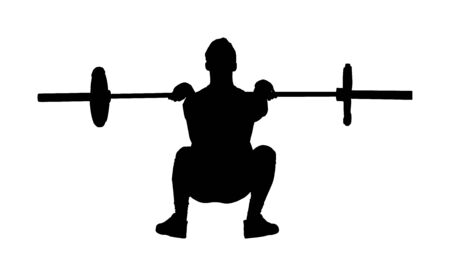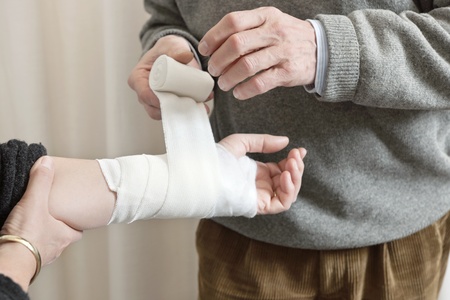Introduction: The Importance of Adaptive Equipment in British Homes
As the UK’s population continues to age, the conversation around maintaining independence and dignity for older adults has become increasingly vital. In Britain, there is a strong cultural value placed on “staying put” – remaining in one’s own home for as long as possible, rather than moving into residential care. This preference is not just about comfort; it reflects a deep-rooted sense of pride, autonomy, and connection to community that many older Britons hold dear. Adaptive equipment plays a crucial role in making this aspiration achievable, transforming everyday living spaces into safer, more accessible environments. From practical aids like grab rails and raised toilet seats to innovative technologies such as remote-controlled lighting or fall alarms, these tools empower elderly individuals to carry out daily activities with confidence and minimal reliance on others. For families and caregivers across the UK, investing in adaptive equipment isn’t simply about convenience—it’s about preserving cherished routines and promoting a higher quality of life at home. By understanding the unique needs and cultural priorities of British seniors, we can better appreciate why adaptive equipment matters so profoundly in supporting ageing with grace and independence.
Mobility Aids: Helping the Elderly Stay on the Move
For many older adults in the UK, maintaining independence and mobility is both a priority and a challenge. British homes often feature narrow corridors, steep staircases, and compact bathrooms, making safe movement more difficult as we age. Fortunately, there is a wide range of mobility aids designed to support elderly residents in navigating their homes and local communities with confidence.
Walking Frames and Rollators: Everyday Essentials
Walking frames (commonly called Zimmer frames in the UK) and rollators are among the most popular mobility solutions for British seniors. These aids provide stability and reduce the risk of falls when moving around at home or out and about. The choice between a walking frame and a rollator often depends on the individual’s balance, strength, and environment.
| Feature | Walking Frame (Zimmer Frame) | Rollator |
|---|---|---|
| Support Level | High – best for those who need substantial support | Moderate – suitable for those who need light to medium assistance |
| Maneuverability | Limited – better for flat indoor surfaces | Excellent – equipped with wheels for smoother navigation outdoors and over thresholds |
| Braking System | N/A | Yes – hand brakes for added safety on slopes or pavements |
| Typical Home Suitability | Narrow corridors and small rooms (British terraced houses) | Larger spaces, outdoor use (bungalows or flats with lifts) |
Stairlifts: Overcoming Multi-Level Challenges
The classic British home layout often involves two storeys and a steep staircase, which can become a daunting barrier to mobility as we age. Stairlifts offer a practical solution by allowing users to move safely between floors without risking falls or overexertion. Modern stairlifts can be custom-fitted to straight or curved stairs, making them suitable for Victorian terraces as well as more contemporary homes.
Key Considerations When Choosing Mobility Aids
- Space constraints: Measure your hallways, doorways, and staircases before purchasing equipment to ensure compatibility with typical British house dimensions.
- Public Spaces: Many rollators are foldable for easy transport on buses or trains—a crucial factor given the UKs reliance on public transport systems.
- User Confidence: It’s not just about physical support; having the right aid boosts confidence, enabling seniors to stay socially active in their communities.
A Personal Perspective
I’ve seen first-hand how introducing even a simple Zimmer frame can transform daily life—suddenly tasks like fetching the post or popping down to the corner shop feel less daunting. And when it comes to stairlifts, the peace of mind they offer both users and their families is immeasurable. With thoughtful selection tailored to both personal needs and typical British layouts, mobility aids truly help older adults stay engaged with life inside—and outside—their homes.

3. Daily Living Support: Making Everyday Tasks Easier
For many elderly individuals in the UK, maintaining independence at home hinges on being able to perform daily tasks with confidence and safety. Adapting the home environment with practical equipment is a game-changer, not only for physical wellbeing but also for mental health and self-esteem. Let’s explore some of the key aids designed specifically for British lifestyles that make everyday routines—like bathing, dressing, and meal preparation—more accessible and dignified.
Bathing Aids: Safety Meets Comfort
Navigating the bathroom can be one of the most challenging aspects of ageing at home, but thankfully there are solutions readily available across Britain. Grab rails are a staple in many UK bathrooms; these sturdy bars can be fitted beside baths, showers, or toilets, providing crucial support when getting in and out. Raised toilet seats are another popular adaptation, reducing the need to bend down and minimising strain on hips and knees—a simple yet effective way to preserve independence. Shower chairs or bath boards offer a stable platform for those who find standing difficult, making personal hygiene both safer and more comfortable.
Dressing Aids: Regaining Confidence
Getting dressed shouldn’t be a struggle. Adaptive equipment like long-handled shoehorns, button hooks, and sock aids are small investments that make a big difference for people with limited dexterity or mobility. These tools help maintain dignity by enabling older adults to dress independently and feel prepared for the day ahead. In my own family, we found that introducing a few of these aids helped my grandmother regain her morning routine—and her confidence.
Meal Preparation: Practical Solutions for British Kitchens
The kitchen is often considered the heart of a British home, but it can present unique risks as we age. Kettle tippers are an ingenious solution that takes the worry out of making a cuppa—they support the weight of the kettle so it can be poured safely without lifting or risking burns. Easy-grip utensils and non-slip mats help ensure meal prep remains manageable, allowing seniors to continue enjoying their favourite recipes. Even something as simple as a perching stool provides a place to rest while cooking or washing up—little changes that have a profound impact on quality of life.
Tailored Equipment for British Homes
What makes adaptive equipment truly valuable is how well it fits into our daily routines here in Britain. From compact designs suitable for terraced homes to aids that cater to our love of tea and hearty meals, there’s an impressive range of products available from local suppliers and NHS services. By thoughtfully selecting aids that address real needs, families can create safer environments where elderly loved ones thrive—not just survive—at home.
Bedroom and Living Area Adaptations
Creating a safe and comfortable environment in the bedroom and living area is crucial for elderly individuals, particularly in British homes where space, layout, and traditional decor often influence adaptation choices. Adaptive equipment not only promotes independence but also blends seamlessly with the familiar aesthetics of UK living spaces.
Adjustable Beds: Enhancing Sleep Quality and Mobility
Adjustable beds are increasingly popular among older adults in Britain, especially for those living alone or with limited mobility. These beds allow users to elevate the head or legs at the touch of a button, making it easier to get in and out of bed, relieve pressure points, and support circulation. Many models are designed to fit standard British bedroom sizes, ensuring they don’t overwhelm the room’s proportions.
Key Features of Adjustable Beds
| Feature | Benefit | Suitability for British Homes |
|---|---|---|
| Electric height adjustment | Makes transfers safer and more comfortable | Fits various bed frames common in UK homes |
| Integrated side rails | Reduces fall risk during sleep | Easily removable for aesthetic flexibility |
| Customisable mattress options | Cater to personal comfort needs (orthopaedic, memory foam) | Available in standard UK sizes (single, double, king) |
Riser-Recliner Chairs: Supporting Everyday Independence
The traditional British sitting room is often the heart of the home. Riser-recliner chairs blend comfort and functionality, offering motorised support to help users rise to standing or recline safely. Modern designs are available in classic fabrics or leathers that match typical British interiors, from cosy cottages to urban flats.
Main Advantages of Riser-Recliner Chairs
- Gentle assistance: Supports joints when moving between sitting and standing positions.
- Customisable styles: Choices include wingback or fireside designs popular in the UK.
- Compact footprints: Suitable for smaller lounges often found in British homes.
Multi-Use Furniture: Maximising Space and Versatility
Given that many British homes have limited space, multi-use furniture provides practical solutions without sacrificing style. Examples include sofa beds for accommodating guests, adjustable tables for hobbies or meals, and modular storage units that keep essential items within easy reach. Such equipment supports not just daily living but also social inclusion—an important part of quality of life as we age.
Examples of Multi-Use Furniture for Elderly Residents
| Furniture Type | Main Function(s) | Ideal Setting |
|---|---|---|
| Sofa bed with firm support | Sitting by day; sleeping by night; suitable for carers or visiting family | Semi-detached & terraced houses; flats with limited guest rooms |
| Nest of tables with wheels | Easily moved for meals, reading, or hobbies; stowed away when not needed | Lounge or conservatory areas commonly found in UK homes |
| Lifting coffee tables with storage compartments | Doubles as a dining surface; stores remote controls, reading glasses etc. | Sitting rooms with multifunctional needs |
The right adaptations can turn any British home into a safer, more supportive environment while preserving cherished routines and aesthetics. By thoughtfully selecting adjustable beds, riser-recliner chairs, and versatile furniture tailored to UK living arrangements, families can help their elderly loved ones maintain both independence and comfort well into later life.
5. Personal Alert Systems and Technology
In the UK, personal alert systems have become a cornerstone in promoting independence and peace of mind for both elderly individuals and their families. Pendant alarms are particularly popular, offering a simple yet effective way for older adults to call for help at the press of a button. Worn around the neck or wrist, these devices connect directly to monitoring centres or designated contacts, ensuring that assistance is always within reach—day or night.
Telecare services further expand on this safety net by integrating sensors throughout the home. These might include fall detectors, door sensors, and even smoke alarms, all linked to a central hub that alerts carers or emergency services if something unusual occurs. This layered approach gives many British families the reassurance they need, especially when loved ones live alone or have complex health needs.
Digital solutions are also gaining ground, with smart home technology tailored to support ageing in place. Voice-activated assistants, medication reminders, and GPS tracking apps allow both seniors and their relatives to stay connected and informed. Many local councils across the UK now partner with tech providers to offer subsidised packages—making these vital tools more accessible than ever before.
From my own experience supporting older family members, I’ve seen firsthand how these technologies can transform daily life. The confidence gained from knowing help is just a button away cannot be overstated; it empowers elderly people to maintain their routines and social connections with fewer worries about potential mishaps.
Ultimately, embracing personal alert systems and modern technology is not just about responding to emergencies—it’s about fostering dignity, autonomy, and a sense of security that enriches quality of life in British homes.
6. Selecting the Right Equipment: Practical Tips and Local Resources
Choosing adaptive equipment for elderly loved ones is not just about picking what looks useful—its about ensuring a good fit for their unique needs and lifestyle. In Britain, we’re fortunate to have a wealth of local resources, professional guidance, and real-world opportunities to trial equipment before making a commitment. Here’s how you can make informed decisions that genuinely enhance day-to-day life.
Trialling Equipment Before You Buy
One of the most practical steps is to try out equipment before purchasing. Many local mobility shops and independent living centres across the UK offer hands-on demonstrations or loan schemes, so you can see how devices like walking frames, shower chairs, or stairlifts work in real-life settings. Don’t be afraid to ask for a home visit—some suppliers and community services will let you test products in your own environment, which makes all the difference when it comes to confidence and comfort.
NHS and Council Support
The NHS provides assessments for adaptive equipment through your GP or local health centre. If your relative has difficulty with daily tasks, ask for an occupational therapy (OT) referral. The OT will assess needs at home and recommend suitable aids—many basic items like grab rails or raised toilet seats may be provided free of charge by the NHS or your local council. Councils also run their own community equipment services; check your local authority’s website for details on eligibility and what support is available in your area.
Engaging with Community Occupational Therapists
Occupational therapists are the unsung heroes when it comes to adapting British homes for safe ageing. Their expertise goes beyond recommending gadgets—they’ll look at your loved one’s routines, physical abilities, and emotional wellbeing to suggest practical solutions tailored to their lifestyle. Engaging early with a community OT not only ensures professional input but also opens doors to other support services, from home adaptations grants to social groups that help maintain independence.
Top Tips from Real Experience
- Always measure spaces carefully before ordering larger items like riser-recliner chairs or stairlifts.
- If possible, involve the person who’ll use the equipment in every decision—they know best what feels comfortable or manageable.
- Ask about maintenance contracts or aftercare—reliable support is as important as the right product.
Connecting with Local Communities
Don’t overlook the power of word-of-mouth: local carers’ groups, Age UK branches, and even neighbours often share honest feedback on which products and suppliers are worth considering. By tapping into Britain’s network of health professionals, council resources, and grassroots advice, you’ll be far better equipped to choose aids that truly make life easier—and more enjoyable—for your elderly family members.
7. Conclusion: Promoting Dignity, Comfort, and Independence
Reflecting on the journey through the essential adaptive equipment that can transform British homes for elderly residents, it becomes clear just how impactful these innovations are in supporting a dignified and independent lifestyle. When appropriate aids—whether grab rails in the bathroom, rise-and-recline chairs in the lounge, or easy-grip utensils in the kitchen—are thoughtfully chosen and sensitively introduced, they do far more than simply address mobility or physical limitations. They empower older adults to maintain their routines, take pride in their personal space, and participate more actively within their families and communities.
In my own experience working with elderly clients across the UK, I’ve witnessed first-hand how a few well-placed pieces of adaptive equipment can make all the difference. A stairlift not only prevents falls but restores confidence; a talking clock brings back control over daily schedules for someone with impaired vision. Each adaptation is a step towards greater autonomy and self-esteem, which are fundamental to quality of life at any age.
Moreover, these adaptations reflect the values embedded in British society—respect for individual choice, compassion for vulnerability, and a commitment to inclusivity. By investing in suitable equipment and encouraging open conversations about changing needs, families can ensure that ageing loved ones continue to feel valued and respected at home. Ultimately, embracing adaptive solutions is not just about safety or convenience; it’s about nurturing an environment where dignity and comfort go hand in hand with independence for every elderly person in Britain.


